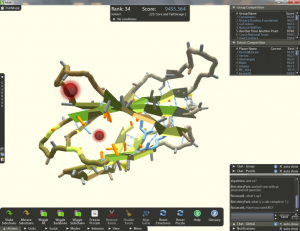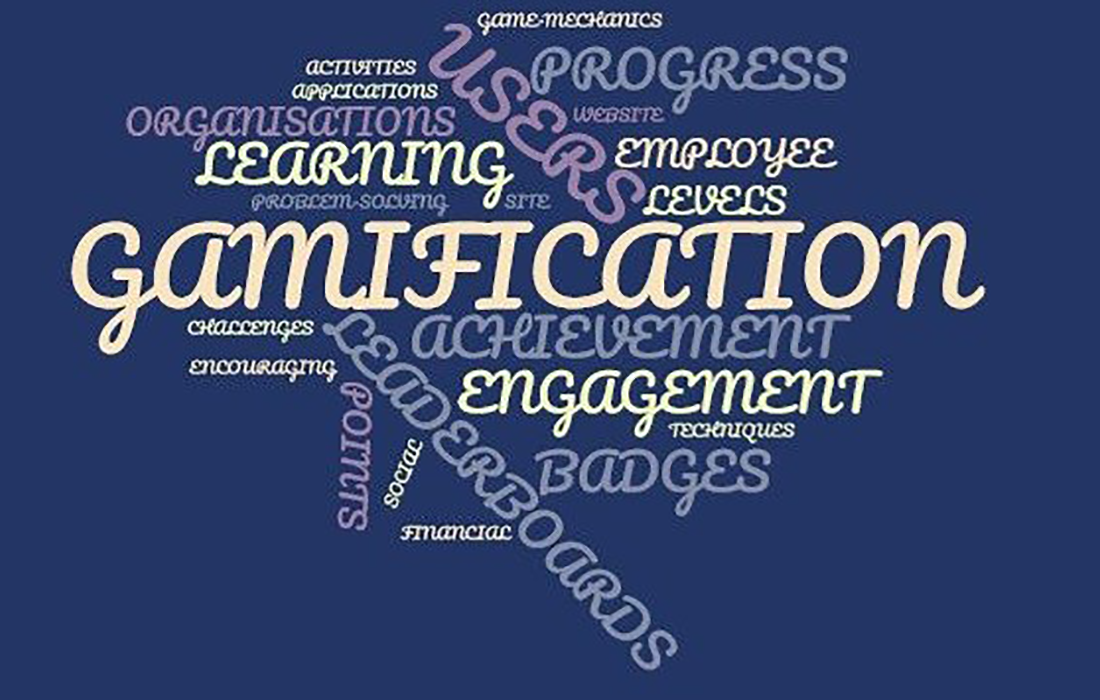In this article the concept of Gamification will be briefly explained. Afterwards three real world Gamification success stories are given.
Let us first start with a brief recap of what Gamification is. If you have read the introductory article on Gamification you can continue to Gamification success stories.
In the last couple of years, Gamification has become a hot topic in multiple industries. Looking at the graph below by Google Trends, it can be concluded that since 2011 the usage of the search term Gamification on Google exploded.

Figure 1 Google Trends search term Gamification, source: https://trends.google.com/trends/explore?date=all&q=gamification
The graph shows the relative popularity of the search term “Gamification”.
In 2011 Gamification started to get attention because of an article by Deterding, which provided a commonly accepted definition for Gamification. The following definition is given in the article: “Gamification combines elements of game design in non-game concepts” . A more elaborate definition is provided in another article by Deterding, Sicart, Nacke, O’Hara, & Dixon. They claim the phenomenon Gamification is an umbrella term for using elements of video games (instead of full-fledged games) in non-game services and applications with the goal of improving user experience and user engagement . Some examples of these elements are: points, badges, leaderboards, challenges, levels and progress.
Another definition which can be used for “Gamification” is given by Gabe Zichermann (2011), whom is a respected authority on Gamification and its applications . In his book “Gamification by design” he defines Gamification as “The process of game-thinking and game mechanics to engage users and solve problems” . In this article the definition given by Gabe Zichermann will be used.
The origin of Gamification lies partly in modern approaches to marketing. However, it also combines the concepts of two game theories. The oldest is an mathematical game theory developed by John von Neumann and Oskar Morgenstern in the 1940s. They presented a groundbreaking mathematical theory combining economic and social aspects, based on a theory about games of strategy . The other game theory focuses on cooperative versus competitive behavior in nature from a psychological perspective. One of the most famous game scenario’s used to describe this theory is the Prisoner’s Dilemma. Most people probably have heard about the Prisoner’s Dillema3. For the ones who didn’t, feel free to read about it in the following article.
As mentioned above, Gamification combines the aspects of the two game theories. From the mathematical side, Gamification involves an economic system around the game in which people can achieve rewards based on interaction with the system. From the psychological side, Gamification needs to be able to recognize whether the users feel more rewarded by either cooperation or competition[3].
Gamification success stories
Over the next sections, a few examples of Gamification will be given. These are examples from businesses, education and even one example which involves supporting scientists who are trying to solve medical problems.
Recyclebank
The first example of Gamification is Recyclebank. The company developed a technology which records the amount a household recycles. Recyclebank rewards people for the amount of material they recycle. The idea is that this will motivate people to recycle everything in order to save money. People get awarded points for the amount they recycle and they can use these points in local and national businesses to receive discounts and deals. Recyclebank also rewards their users for taking eco-challenges, engaging with educational content and pledging to make more sustainable choices online. The company focuses on providing sustainable rewards that can be used on a daily basis, encouraging greener lifestyles. Recyclebank also started “The Recyclebank Green Schools program”. The program awards environmental project grants to schools in Recyclebank communities. The idea is that these schools, their students and their communities work together to create greener communities. While doing this, they encourage residents of the community to donate points that Recyclebank transfers into real dollars for schools. This is a good example of a business which uses Gamification to make the world a better place .
Duolingo
The next example involves the use of Gamification in an educational context. The company Duolingo created an innovative way to help people learn a language, and by doing so also providing a platform for the crowdsourced translation of webpages. Duolingo developed an app and a website to achieve this. The way it works is that while users progress with their learning they help to translate documents and websites . While learning the desired language, users earn skill points whenever they complete a lesson or web content is translated. Duolingo also included time-based elements were users are given time bonuses or skill points when questions are answered correctly within a given time limit. However, incorrect answering of the question will result in a loss of points which will delay levelling up. The system created by Duolingo is adaptive; it tracks the users’ progress in order to provide feedback and plan future lessons and translation assignments. When a user spends more time learning a language, the system can better address their needs. The users can also vote on the quality of translations made by other users. This provides valuable feedback for learning the desired language. The translations with the best ratings are published for public viewing and collection. With their website, app, system and 110 million users worldwide Duolingo has created a great education Gamification experience.
Foldit
To wrap up the article, the final example of Gamification is a gaming application which led to a breakthrough in AIDS research. The application, called Foldit, enabled users to create new shapes of proteins. Users could experiment with folding digital molecules. The goal was to create the most optimum protein. With Foldit the users could turn and flip a digital 3D model of the protein, which was given by the scientists, to create this optimum protein.

Figure 2 Foldit screenshot. https://upload.wikimedia.org/wikipedia/commons/2/28/Foldit_screenshot.png
The scientists had been trying to determine the precise structure of this specific protein for years . With the use of Foldit and its user community the scientists managed to achieve an optimum structure for the enzyme within three weeks[11]. The use of Gamification by the creators of Foldit to solve a real-world problem has created significant value to the AIDS research.
To wrap up the article, Gamification can be used in different forms and contexts to achieve various goals. We hope this article has provided you with some insight in the applications of Gamification.
[1] Deterding, S., Dixon, D., Khaled, R., & Nacke, L. (2011). From game design elements to gamefulness: defining “gamification”. MindTrek ’11 Proceedings of the 15th International Academic MindTrek Conference: Envisioning Future Media Environments, (pp. 9-15). Tampere, Finland.
[2] Deterding, S., Sicart, M., Nacke, L., O’Hara, K., & Dixon, D. (2011). Gamification. using game-design elements in non-gaming contexts. CHI EA ’11 CHI ’11 Extended Abstracts on Human Factors in Computing Systems, (pp. 2425-2428). Vancouver, BC, Canada.
[3] Crawford, S. (2011, April 5). How Gamification Works. Retrieved from How Stuff Works Tech: http://electronics.howstuffworks.com/gamification.htm
[4] Zicherman, G., & Cunningham, C. (2011). Gamification by Design. Sebastopol: O’Reilly media.
[6] Recyclebank. (2017, 3 22). Recyclebank Who Are We. Retrieved from Recyclebank: https://www.recyclebank.com/corporate-info/
[7] Duolingo Personal Education. (2017, 3 22). Retrieved from Duolingo: https://www.duolingo.com/info
[8] How this language learning app got 110 million users without spending a dollar on marketing. (2016, 3 3). Retrieved from Techinasia: https://www.techinasia.com/how-duolingo-got-110-million-users
[9] Chou, Y.-k. (2017, Januari 25). Gamification in Education: Top 10 Gamification Case Studies that will Change our Future. Retrieved from yukaichou.com: http://yukaichou.com/gamification-examples/top-10-education-gamification-examples/
[10] Moskvitch, K. (2011, 9 20). Online game Foldit helps anti-Aids drug quest. Retrieved from BBC: http://www.bbc.com/news/technology-14986013
[11] Coren, M. J. (2011, 9 20). Foldit Gamers Solve Riddle of HIV Enzyme within 3 Weeks. Retrieved from Scientific American: https://www.scientificamerican.com/article/foldit-gamers-solve-riddle/




